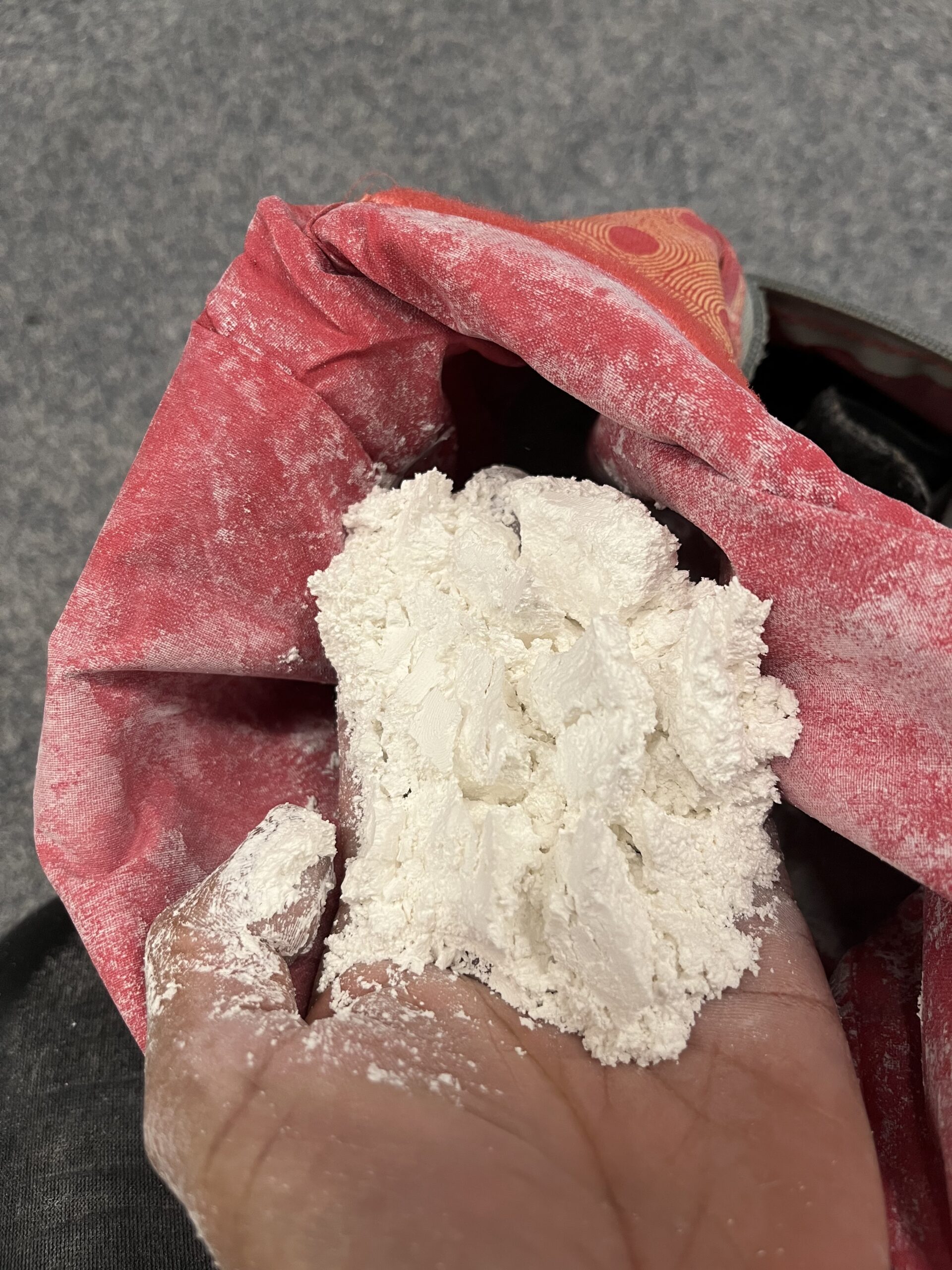Not all climbing chalk is the same. There are different types of climbing chalk, each with its own properties and benefits. Here are the main types of climbing chalk and their characteristics:
1. Loose Chalk:
- Description: This is the most common type of climbing chalk, available in powder form.
- Pros: Easy to apply, good coverage, and often the cheapest option.
- Cons: Can be messy and creates dust.
- Examples: Black Diamond White Gold, FrictionLabs Unicorn Dust.
2. Chalk Balls:
- Description: Loose chalk is contained within a mesh or fabric ball, which helps control the amount of chalk dispensed.
- Pros: Less messy than loose chalk, reduces waste, and is often allowed in gyms with strict chalk policies.
- Cons: May not provide as much coverage as loose chalk.
- Examples: Metolius Super Chalk Sock, Black Diamond Refillable Chalk Shot.
3. Liquid Chalk:
- Description: A mixture of chalk and alcohol that you apply to your hands, which dries to leave a chalky layer.
- Pros: Long-lasting, less messy, and produces minimal dust. Great for initial coverage.
- Cons: Takes time to dry, can be more expensive, and some climbers find it dries out their skin.
- Examples: FrictionLabs Secret Stuff, Black Diamond Liquid White Gold.
4. Block Chalk:
- Description: Solid blocks of chalk that you break down into your desired consistency.
- Pros: Can be less messy than loose chalk, allows for customized texture.
- Cons: Requires breaking apart before use, which can be inconvenient.
- Examples: Metolius Super Chalk Block, Petzl Power Crunch.
5. Blended Chalk:
- Description: A mix of different types of chalk or additives (e.g., drying agents like magnesium carbonate and drying aids like silica).
- Pros: Enhanced performance with added drying agents, often provides a good balance between grip and moisture control.
- Cons: Can be more expensive than basic chalk.
- Examples: FrictionLabs blends (e.g., Unicorn Dust, Gorilla Grip), Black Diamond Black Gold (which includes Upsalite).
6. Eco-Friendly Chalk:
- Description: Chalk designed to be more environmentally friendly, often made from sustainably sourced materials or with reduced dust formulas.
- Pros: Better for the environment, less impact on climbing areas.
- Cons: Can be more expensive, availability may be limited.
- Examples: Sublime Climbing Eco Chalk, Joshua Tree Eco Balls.
Key Considerations for Choosing Climbing Chalk:
- Type of Climbing: For bouldering or sport climbing where frequent reapplication is needed, loose chalk or chalk balls might be ideal. For longer routes or competitions, liquid chalk can provide a solid base layer.
- Environment: Some climbing gyms have restrictions on the type of chalk allowed due to dust concerns. Liquid chalk or chalk balls are often preferred in such settings.
- Personal Preference: Some climbers prefer the texture and feel of certain chalk types over others. Experimenting with different types can help you find what works best for you.
- Skin Sensitivity: If you have sensitive skin, some chalks with added drying agents may cause irritation. Look for options specifically formulated to be gentle on the skin.
In summary, while all climbing chalk serves the primary purpose of drying your hands to improve grip, the variations in form, composition, and additives can significantly impact performance and personal preference.

Leave a Reply